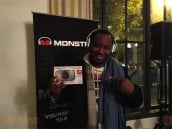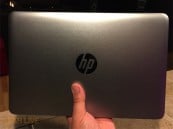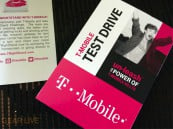Find Our Latest Video Reviews on YouTube!
If you want to stay on top of all of our video reviews of the latest tech, be sure to check out and subscribe to the Gear Live YouTube channel, hosted by Andru Edwards! It’s free!
Latest Gear Live Videos
 A recent study claims that the Arctic may lose its ice cover in summer in as few as 30 years, as opposed to the end of the century, as the the Intergovernmental Panel on Climate Change in 2007 predicted. While that study used 11 models to base their facts on, Muyin Wang and James Overland picked 6 of the 23 now available and noted that the change will probably come from the average figure of 32 years, but may be as early as 11. Most scientists figure that parts of northern Canada and Greenland will still have ice in summer.
A recent study claims that the Arctic may lose its ice cover in summer in as few as 30 years, as opposed to the end of the century, as the the Intergovernmental Panel on Climate Change in 2007 predicted. While that study used 11 models to base their facts on, Muyin Wang and James Overland picked 6 of the 23 now available and noted that the change will probably come from the average figure of 32 years, but may be as early as 11. Most scientists figure that parts of northern Canada and Greenland will still have ice in summer.
Read More  | University Washington News
| University Washington News
Gallery: Arctic May Lose Summer Ice Within 30 Years
Advertisement
Want to know what it would feel like to hop into a black hole without having to travel in space and actually doing it? Andrew Hamilton and Gavin Polhemus at the University of Colorado built a computer code which is based on Einstein’s general theory of relativity. The “participant” goes on an orbit into the hole that weighs 5 million times the mass of the sun. Starlight behind the black hole is swallowed up, however light from other ones are merely bent. They are hoping that the knowledge will help physicists understand the inner workings of the hole.
Read More  | New Scientist
| New Scientist
Gallery: Video Simulates Black Hole
Geologists Set Up Earthquake Detection Stations

Posted by Sheila Franklin Categories: Misc. Tech, Science,
 The southern end of the 800 mile San Andreas Fault in California is currently being wired so that scientists will know when “the big one” hits. Bill Curtis, a technician with the U.S. Geological Survey, says that even the “smallest little bump shows up there.” Eleven stations will be set up with each having two sensors that measure speed and acceleration. This project certainly came at the right time because of the 250 small tremors that recently struck. All were picked up by stations on the east shore of the Salton Sea. All told, there is a network of 300 stations across the state.
The southern end of the 800 mile San Andreas Fault in California is currently being wired so that scientists will know when “the big one” hits. Bill Curtis, a technician with the U.S. Geological Survey, says that even the “smallest little bump shows up there.” Eleven stations will be set up with each having two sensors that measure speed and acceleration. This project certainly came at the right time because of the 250 small tremors that recently struck. All were picked up by stations on the east shore of the Salton Sea. All told, there is a network of 300 stations across the state.
Read More  | NY Times
| NY Times
Gallery: Geologists Set Up Earthquake Detection Stations
TASER XREP Causes Incapacitation for 20 Seconds

Posted by Sheila Franklin Categories: Misc. Tech, Science,
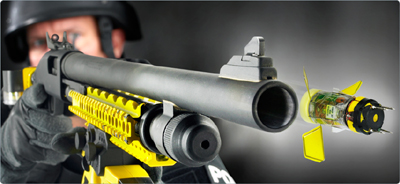
This is just too much taser for anyone to have to endure. The TASER XREP is a projectile that is wireless and self-contained and can be fired from a 12-gauge Less Lethal Shotgun. It can go a distance of up to 65 ft. and autonomously creates neuromuscular incapacitation (NMI) for 20 seconds. But it is this description of what happens should the
subject intervene that makes us recoil in horror and silently scream, “Don’t tase me, bro’.”
“If the subject tries to grab or disconnect the XREP projectile, the reflex engagement electrodes complete a circuit allowing TASER NMI to discharge from the nose, through the subject’s body, out to the hand that grabbed the projectile. This reaction creates a significant spread that allows the XREP projectile pulses to affect a large body mass, causing overpowering NMI.”
By the way, if you wanna see one of us get TASER’d, hit the jump for the video.
Click to continue reading TASER XREP Causes Incapacitation for 20 Seconds
Read More  | TASER
| TASER
Gallery: TASER XREP Causes Incapacitation for 20 Seconds
Wicked Lasers Spyder II GX review

Posted by Andru Edwards Categories: Accessories, Features, Product Reviews, Science,
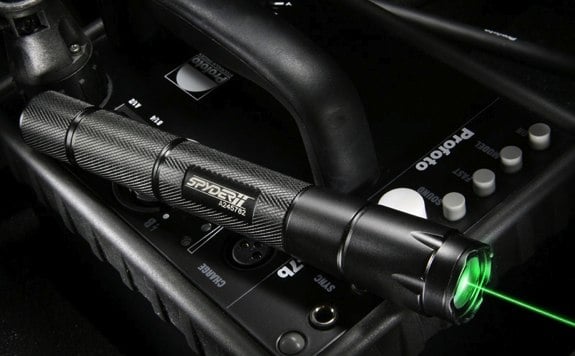
We’ve been playing with the Wicked Lasers Spyder II GX laser for a few weeks now, and wanted to report back with some of our initial thoughts because we hit you with a video feature on Bleeding Edge TV.
So the Spyder II GX is a military-grade green laser that is housed in a light, black aluminum shell. The casing seems to be sctrach-proof, and just looks good. With purchase, you get the laser, two rechargeable lithium ion 18650 batteries (the lasers is powered by one, you so can always have a spare charged,) a pair of green 532nm LaserShades (to protect the eyes,) and a universal battery charger. All that will cost you $1,699.99.
Click to continue reading Wicked Lasers Spyder II GX review
Read More  | Wicked Lasers Spyder II GX
| Wicked Lasers Spyder II GX
Gallery: Wicked Lasers Spyder II GX review
Self-Healing Scratches With Polyurethane Car Coating

Posted by Sheila Franklin Categories: Science, Transportation,
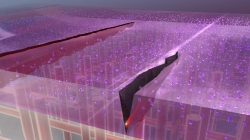 Scientists from the University of So. Mississippi created a new material that can be put on cars and when scratched, can heal itself. The technology consists of a polyurethane coating with added chitosan, a polymer in crab and shrimp shells. Then oxetane rings, with 3 atoms of carbon and one of oxygen, are added. The mixture is said to mimic the natural process of healing. Published in an issue of Science, Biswajit Ghosh and Marek Urban claim that this technique is simple and cost-efficient.
Scientists from the University of So. Mississippi created a new material that can be put on cars and when scratched, can heal itself. The technology consists of a polyurethane coating with added chitosan, a polymer in crab and shrimp shells. Then oxetane rings, with 3 atoms of carbon and one of oxygen, are added. The mixture is said to mimic the natural process of healing. Published in an issue of Science, Biswajit Ghosh and Marek Urban claim that this technique is simple and cost-efficient.
Read More  | ARS Technica
| ARS Technica
Gallery: Self-Healing Scratches With Polyurethane Car Coating
 Have you ever gotten depressed after serving jury duty? Psychologists at the University of Leicester in the UK claim that doing so can result in trauma for those who serve. They pinpointed witnessing harrowing and/or gruesome evidence related to crimes against people could result in anxiety, clinical levels of stress or even symptoms of PTSD. Dr. Noelle Robertson and colleagues say that women are most vulnerable and that a lot of it occurs because jurors are not allowed to talk about the case. The study was conducted on a small scale and the report suggests more support for jurors and making sure that they did not have similar past experiences.
Have you ever gotten depressed after serving jury duty? Psychologists at the University of Leicester in the UK claim that doing so can result in trauma for those who serve. They pinpointed witnessing harrowing and/or gruesome evidence related to crimes against people could result in anxiety, clinical levels of stress or even symptoms of PTSD. Dr. Noelle Robertson and colleagues say that women are most vulnerable and that a lot of it occurs because jurors are not allowed to talk about the case. The study was conducted on a small scale and the report suggests more support for jurors and making sure that they did not have similar past experiences.
Read More  | gizmag
| gizmag
Gallery: Jury Duty Can Result in Stress Related Disorders
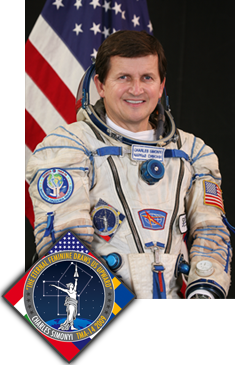 Lucky Charles Simonyi is going back into space March 26, the first private citizen to make a return trip. He will conduct a series of experiments as well as communicate with students via HAM radio on the ISS (ARISS) during the 12 day trek. We first mentioned him back in 2007 and now, like then, he will continue to blog from his website and feature live video and audio content from NASA TV in his “Follow the Updates” section. Although the second flight is undoubtedly still costing him a fortune, we expect he will reuse his suit.
Lucky Charles Simonyi is going back into space March 26, the first private citizen to make a return trip. He will conduct a series of experiments as well as communicate with students via HAM radio on the ISS (ARISS) during the 12 day trek. We first mentioned him back in 2007 and now, like then, he will continue to blog from his website and feature live video and audio content from NASA TV in his “Follow the Updates” section. Although the second flight is undoubtedly still costing him a fortune, we expect he will reuse his suit.
Read More  | Charles in Space
| Charles in Space
Gallery: Charles Going Back to Space
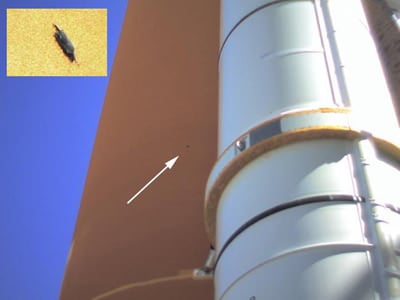
A tiny bat was spotted on the space shuttle when it was launched Sunday. After studying the photo taken by collectSpace.com (shown in close up in the upper left,) NASA officials said that it may have had a broken wing and was holding on to Discovery’s external fuel tank. The Final Inspection Team even named him ‘Interim Problem Report 119V-0080.’ They were hoping that he would let go before liftoff, but that does not appear to be the case. Vaya con Dios, little bat.
Read More  | Space
| Space
Gallery: Bat Hitches Ride on Discovery
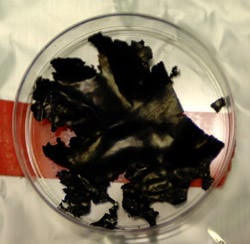 Imagine charging your self phone in seconds instead of hours. Professor Gerbrand Ceder from MIT has devised a new lithium-ion battery electrode that is many times faster than its predecessors. While most discharge at a rate of a minute and a half with the best high powered batteries, this one works in only 10 to 20 seconds. That rate will allow a 1 liter battery to deliver about 25,000W, enough power for about 20 vacuum cleaners. Ceder and his team modified lithium iron phosphate, an electrode material, so that electrons and ions could move more quickly.
Imagine charging your self phone in seconds instead of hours. Professor Gerbrand Ceder from MIT has devised a new lithium-ion battery electrode that is many times faster than its predecessors. While most discharge at a rate of a minute and a half with the best high powered batteries, this one works in only 10 to 20 seconds. That rate will allow a 1 liter battery to deliver about 25,000W, enough power for about 20 vacuum cleaners. Ceder and his team modified lithium iron phosphate, an electrode material, so that electrons and ions could move more quickly.
Current lithium rechargeable batteries can store large amounts of energy but don’t have the acceleration speed. Professor Cedar claims that because the material is not new, but simply remade, scientists could conceivably market it in the next couple of years.
Read More  | MIT via Technology Review
| MIT via Technology Review



